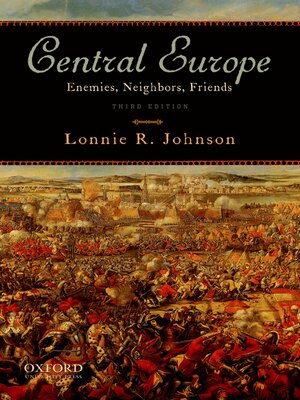
Sign up to save your library
With an OverDrive account, you can save your favorite libraries for at-a-glance information about availability. Find out more about OverDrive accounts.
Find this title in Libby, the library reading app by OverDrive.



Search for a digital library with this title
Title found at these libraries:
| Library Name | Distance |
|---|---|
| Loading... |
Throughout the Cold War era, the Iron Curtain divided Central Europe into a Communist East and a democratic West, and we grew accustomed to looking at this part of the world in bipolar ideological terms. Yet many people living on both sides of the Iron Curtain considered themselves Central Europeans, and the idea of Central Europe was one of the driving forces behind the revolutionary year of 1989 as well as the deterioration of Yugoslavia and its ensuing wars. Central Europe provides a broad overview and comparative analysis of key events in a historical region that encompasses contemporary Germany, Poland, the Czech Republic, Slovakia, Austria, Hungary, Slovenia, and Croatia. Starting with the initial conversion of the "pagan" peoples of the region to Christianity around 1000 A.D. and concluding with the revolutions of 1989 and the problems of post-Communist states today, it illuminates the distinctive nature and peculiarities of the historical development of this region as a cohesive whole. Lonnie R. Johnson introduces readers to Central Europe's heritage of diversity, the interplay of its cultures, and the origins of its malicious ethnic and national conflicts. History in Central Europe, he shows, has been epic and tragic. Throughout the ages, small nations struggled valiantly against a series of imperial powers—Ottoman Turkey, Habsburg Austria, imperial Germany, czarist Russia, Nazi Germany, and the Soviet Union—and they lost regularly. Johnson's account is present-minded in the best sense: in describing actual historical events, he illustrates the ways they have been remembered, and how they contribute to the national assumptions that still drive European politics today. Indeed, the constant interplay of reality and myth—the processes of myth-making and remembrance—animates much of this history. Since the fall of the Iron Curtain in 1989, the unanticipated problems of transforming post-Communist states into democracies with market economies, the wars in the former Yugoslavia, and the challenges of European integration have all made Central Europe the most dynamic and troubled region in Europe. In Central Europe, Johnson combines a vivid and panoramic narrative of events, a nuanced analysis of social, economic, and political developments, and a thoughtful portrait of those myths and memories that have lives of their own—and consequences for all of Europe.







